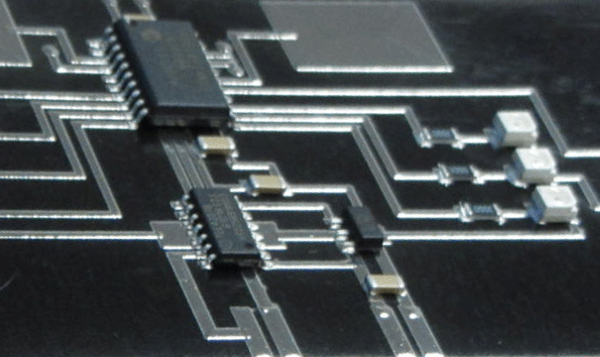In 2012 a tsunami of media hype began around consumer 3D printing that turned a lacklustre 30-year-old technology into a household name and created massive growth in the industry even among large established players. The same pattern of hype is about to repeat with the advent of consumer-level 3D printed electronics. This represents the collision of the multibillion dollar markets for printed electronics and 3D printing. The impact this will have is detailed in the brand new IDTechEx Research report From 2D to 3D Printed Electronics 2015-2025.
 A raft of new technologies are coming to market that span everything from traditional flat and rigid 2D printed circuit boards to fully 3D printed electronics. Existing consumer-level 3D printers can use several different kinds of conductive thermoplastics. Several Kickstarter projects are commercialising a variety of technologies that allow simple flat circuit boards to be created quickly and easily. One company is developing an equivalent technology for professional PCB prototyping. Several companies are competing for the mass production of antennas using different technologies to print on arbitrary 3D surfaces. Finally, Voxel8 are bringing to market the first machine that allows highly conductive and insulating materials to be 3D printed in order to make objects that solve both mechanical and electrical challenges.
A raft of new technologies are coming to market that span everything from traditional flat and rigid 2D printed circuit boards to fully 3D printed electronics. Existing consumer-level 3D printers can use several different kinds of conductive thermoplastics. Several Kickstarter projects are commercialising a variety of technologies that allow simple flat circuit boards to be created quickly and easily. One company is developing an equivalent technology for professional PCB prototyping. Several companies are competing for the mass production of antennas using different technologies to print on arbitrary 3D surfaces. Finally, Voxel8 are bringing to market the first machine that allows highly conductive and insulating materials to be 3D printed in order to make objects that solve both mechanical and electrical challenges.
The technologies covered in the report include inkjetting, extrusion and Optomec’s Aerosol Jet, and the materials covered include:
- Metals
- Conductive and insulating thermoplastics
- Conductive and insulating inks
- Conductive pastes
- Conductive photopolymers
The relative advantages and disadvantages of all valid combinations of technologies and materials is assessed quantitatively.
Potential applications include:
- Mass customisation of circuits.
- Flexible circuits.
- Non-flat circuits.
- Rapid prototyping of traditional PCB designs 100x more quickly, 8x more cheaply and without putting core IP at risk.
- Mass production of antennas on curved surfaces for mobile and wearable devices.
- Educational use of relatively cheap and simple single- and double-layer circuits and experimentation with 3D printed electrical devices such as electromagnets and even motors.
These applications and more are assessed in detail and the potential for 3D printed electronics is examined both in the context of incumbent technologies such as PCB etching and competing technologies such as laser direct structuring (LDS).
Major growth areas likely to accelerate the adoption of 3D printed electronics even further include:
- Flexible and stretchable electronics for wearable technologies, forecast to reach $70bn by 2025.
- Structural electronics, forecast to reach tens of billions of dollars by 2025.
The potential impact of these adjacent developments and the effect they may have on the 3D printed electronics market is discussed.
Led by interviews, the report From 2D to 3D Printed Electronics 2015-2025 (www.
For more information on the IDTechEx Research report see www.IDTechEx.com/3dpe.






